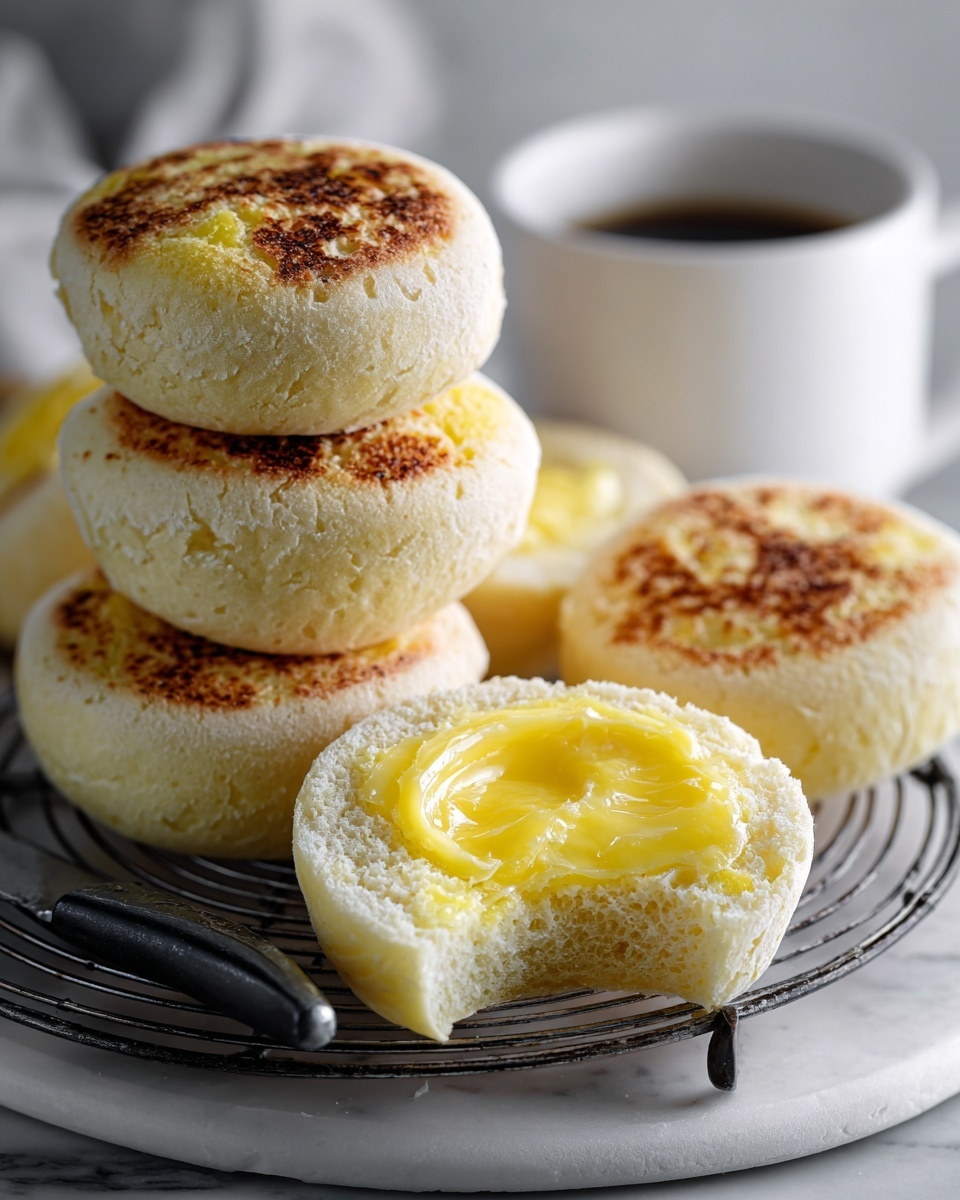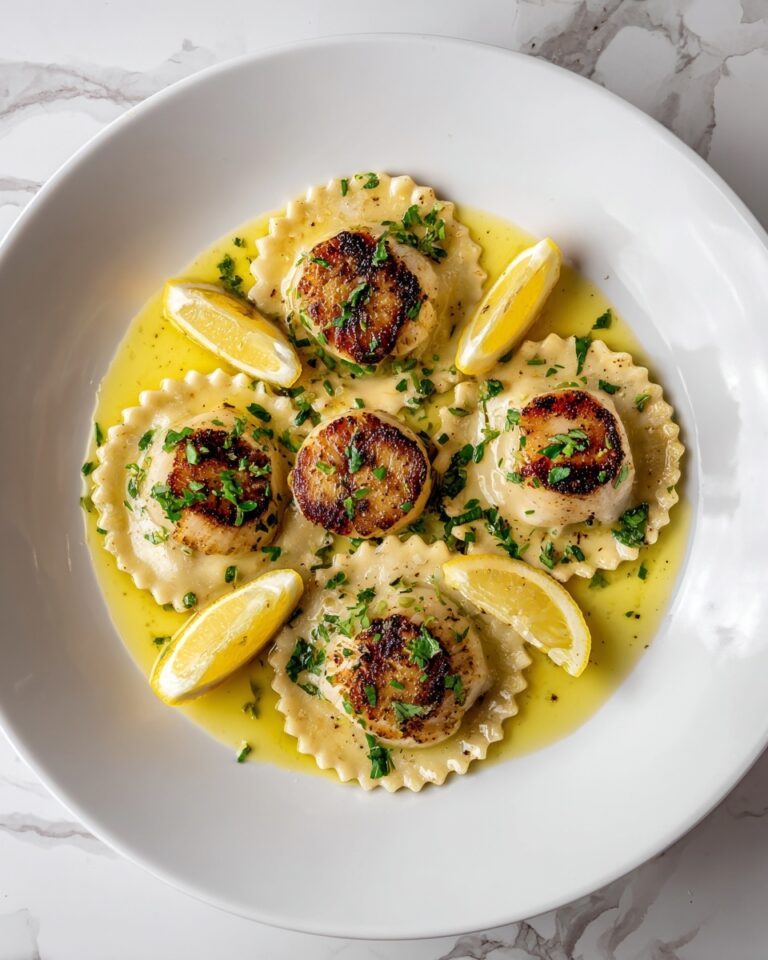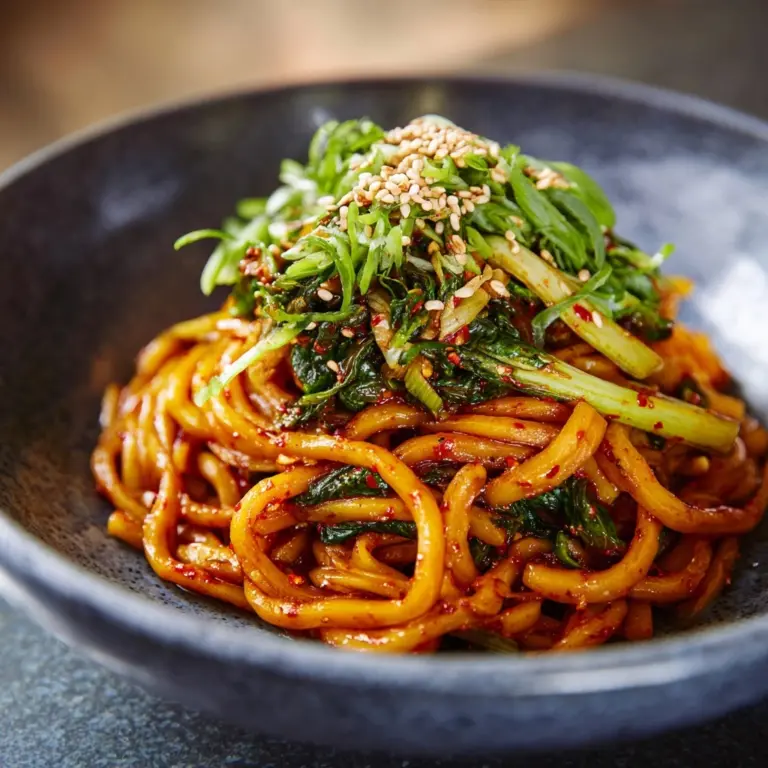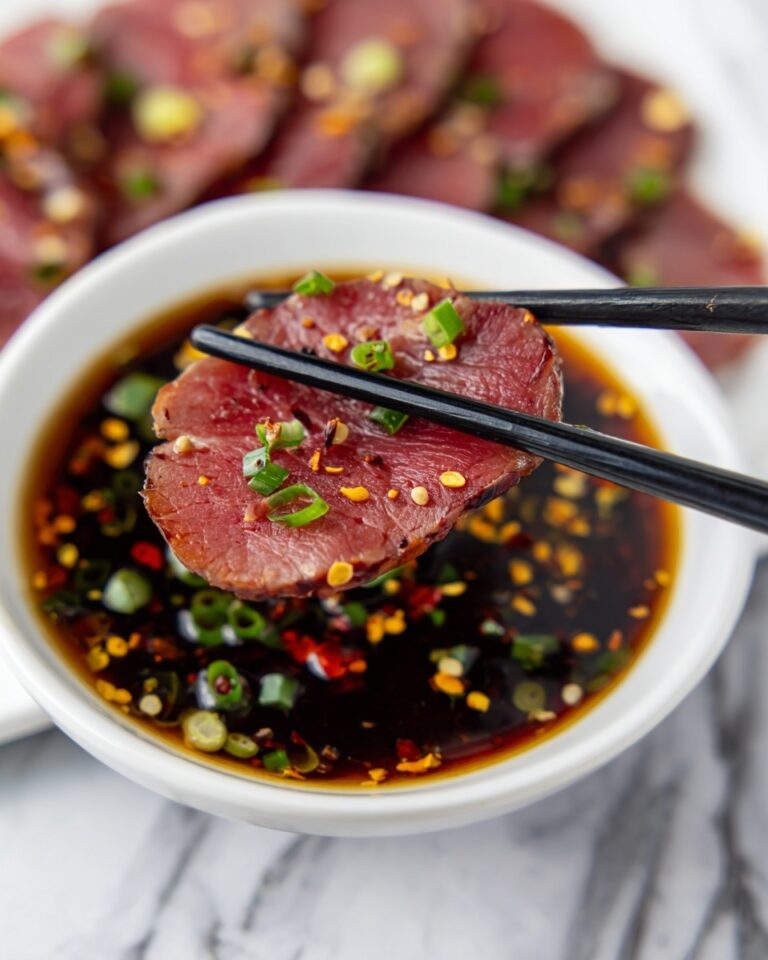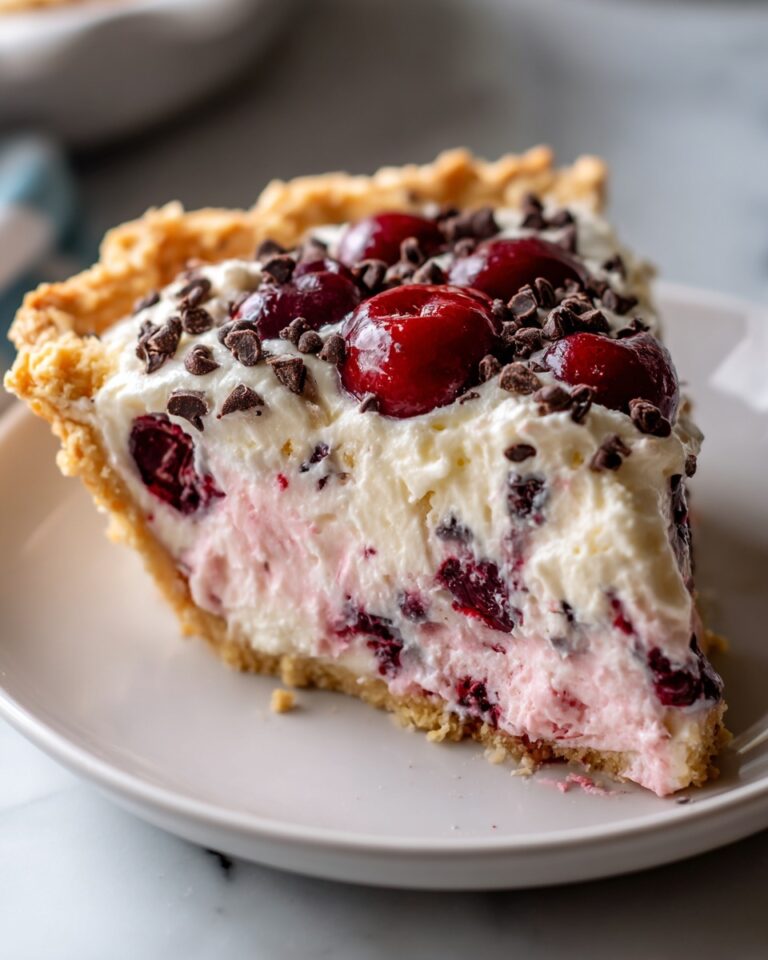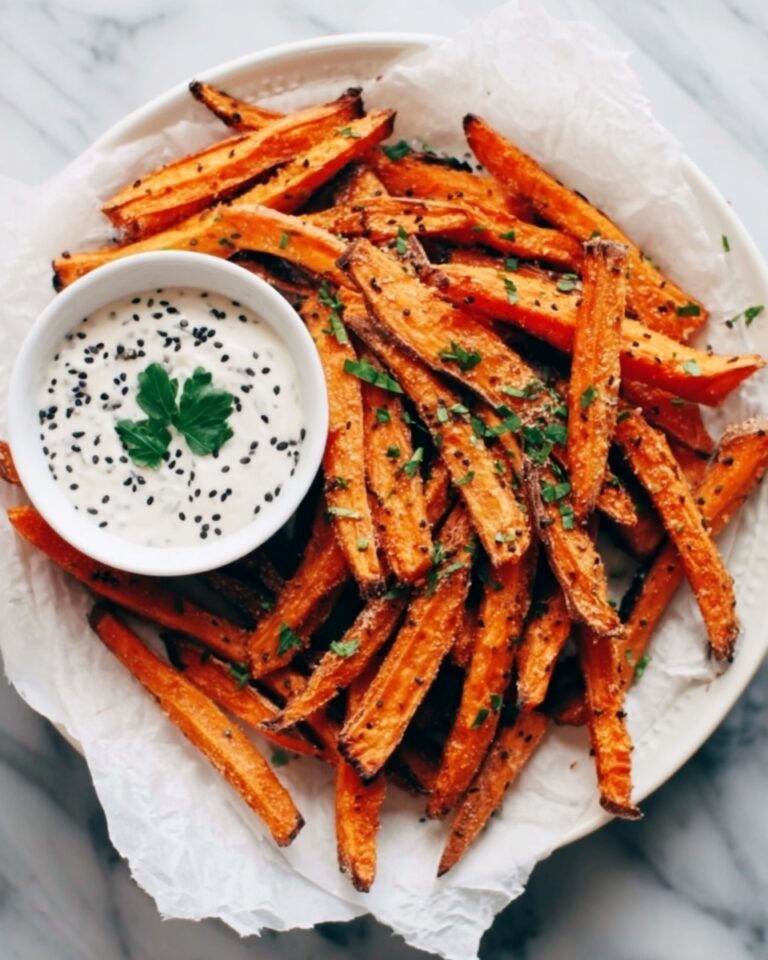If you have ever savored the comforting crispness and tender crumb of a freshly toasted muffin with a touch of melting butter, then you are in for a treat with this Homemade English Muffins Recipe. This classic bread, perfect for breakfast or an anytime snack, boasts a distinctive nooks-and-crannies texture that soaks up all your favorite spreads beautifully. Making them from scratch is not only satisfying but surprisingly simple, allowing you to enjoy bakery-quality English muffins right in your own kitchen.
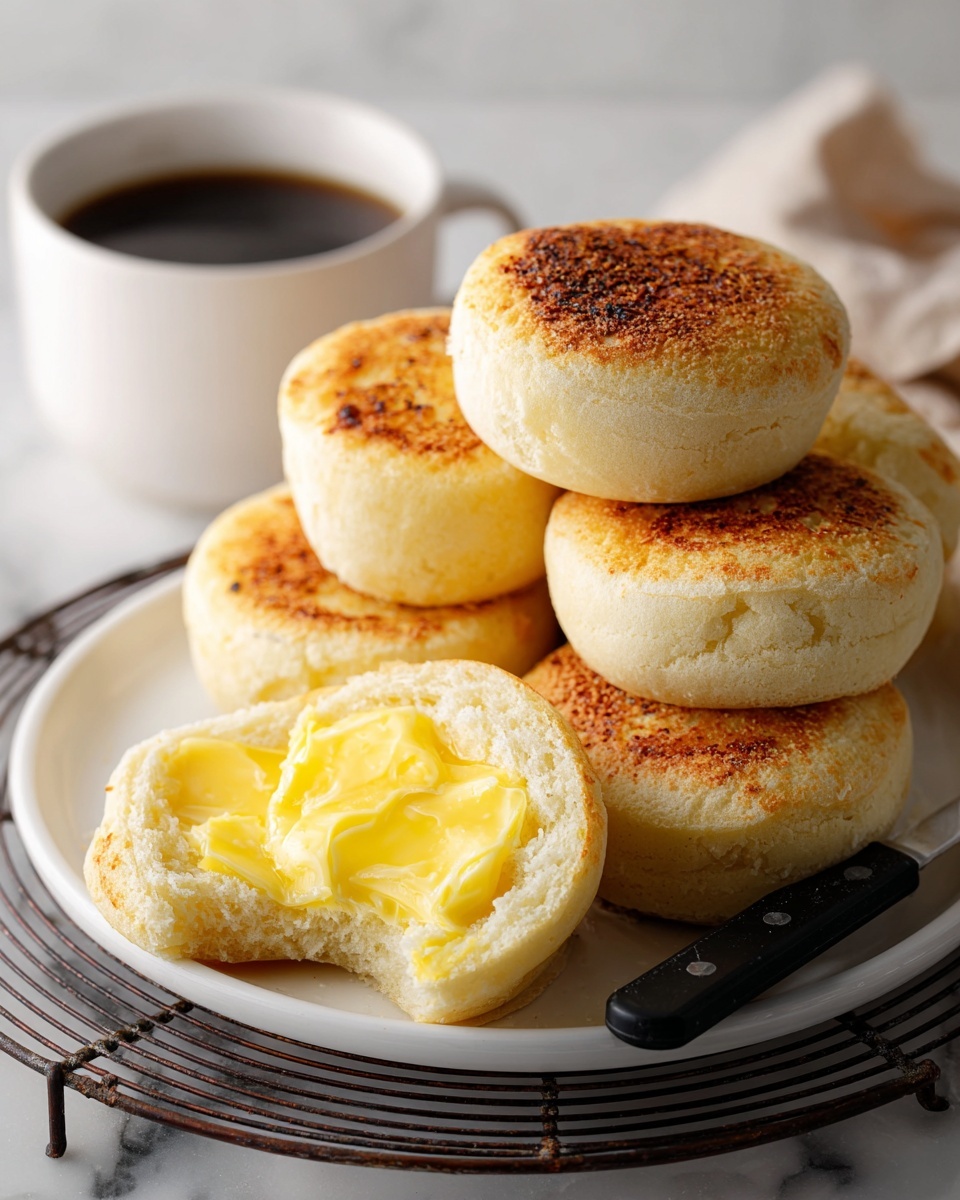
Ingredients You’ll Need
The magic of this Homemade English Muffins Recipe lies in its simple yet thoughtfully chosen ingredients. Each one plays a crucial role: the flour provides structure, yeast brings the rise and airy texture, and touches of milk and butter enrich the flavor and softness. Together, they create that perfect balance of crispy exterior and soft, chewy interior we all love.
- All-Purpose Flour: The primary base that gives structure and bite to the muffins.
- Active Dry Yeast: Helps the dough rise to create that airy, light crumb.
- Sugar: Feeds the yeast and adds a subtle hint of sweetness.
- Salt: Enhances all other flavors and balances the dough.
- Milk: Adds richness and softness to the texture.
- Butter: Melted and incorporated for a tender crumb and flavor depth.
- Warm Water: Activates the yeast and hydrates the dough.
- Cornmeal: For dusting — it prevents sticking and provides that classic muffin bottom texture.
- Baking Soda: (Though not in your recipe instructions, sometimes used for added lift or acidity balancing, but optional here if desired.)
- Egg: Adds richness and helps with texture and binding.
- White Vinegar: Small acid addition to strengthen the dough and enhance the rise.
How to Make Homemade English Muffins Recipe
Step 1: Prepare Your Cooking Surface
Start by warming your skillet or griddle over low heat while the dough is proving. A gently heated cooking surface ensures your muffins cook evenly without burning, giving you that perfectly golden crust.
Step 2: Activate the Yeast
In a mixing bowl, combine the warm water, warm milk, sugar, and active dry yeast. Let this mixture sit until it becomes frothy, usually about 5-10 minutes. This step is crucial because it wakes up the yeast, giving your muffins their characteristic airy quality.
Step 3: Mix Dough Ingredients
Once frothy, add melted butter, beaten egg, and white vinegar into the yeast mixture. Follow by stirring in the all-purpose flour and salt to form a sticky dough. The dough should feel tacky but manageable — that means it’s perfectly hydrated for soft, chewy muffins.
Step 4: Prepare Cooking Surface with Cornmeal
Lightly oil your skillet or griddle and generously sprinkle cornmeal over the surface. This prevents the dough from sticking and contributes that signature crunchy texture on the muffin’s base.
Step 5: Let Dough Rise and Shape Muffins
Cover your dough and let it rise for about an hour and a half in a warm spot until it doubles in size. Then, divide the dough into 8 to 10 equal portions. Shape each piece into a round disc about 1/2 inch thick, and coat each disc with cornmeal to keep them from sticking and to add texture.
Step 6: Cook the Muffins
Place the discs onto the prepared skillet over low heat. Cover and cook each side for 7 to 8 minutes until golden brown. Cooking slowly at low heat ensures the muffins cook through without burning the outside, creating that tender crumb inside.
Step 7: Cool and Fork-Split
Once cooked, transfer the muffins to a wire rack to cool. For that classic English muffin texture, split each muffin open with a fork rather than cutting — this helps preserve the nooks and crannies that make these muffins so perfect for soaking up butter, jam, or eggs.
How to Serve Homemade English Muffins Recipe
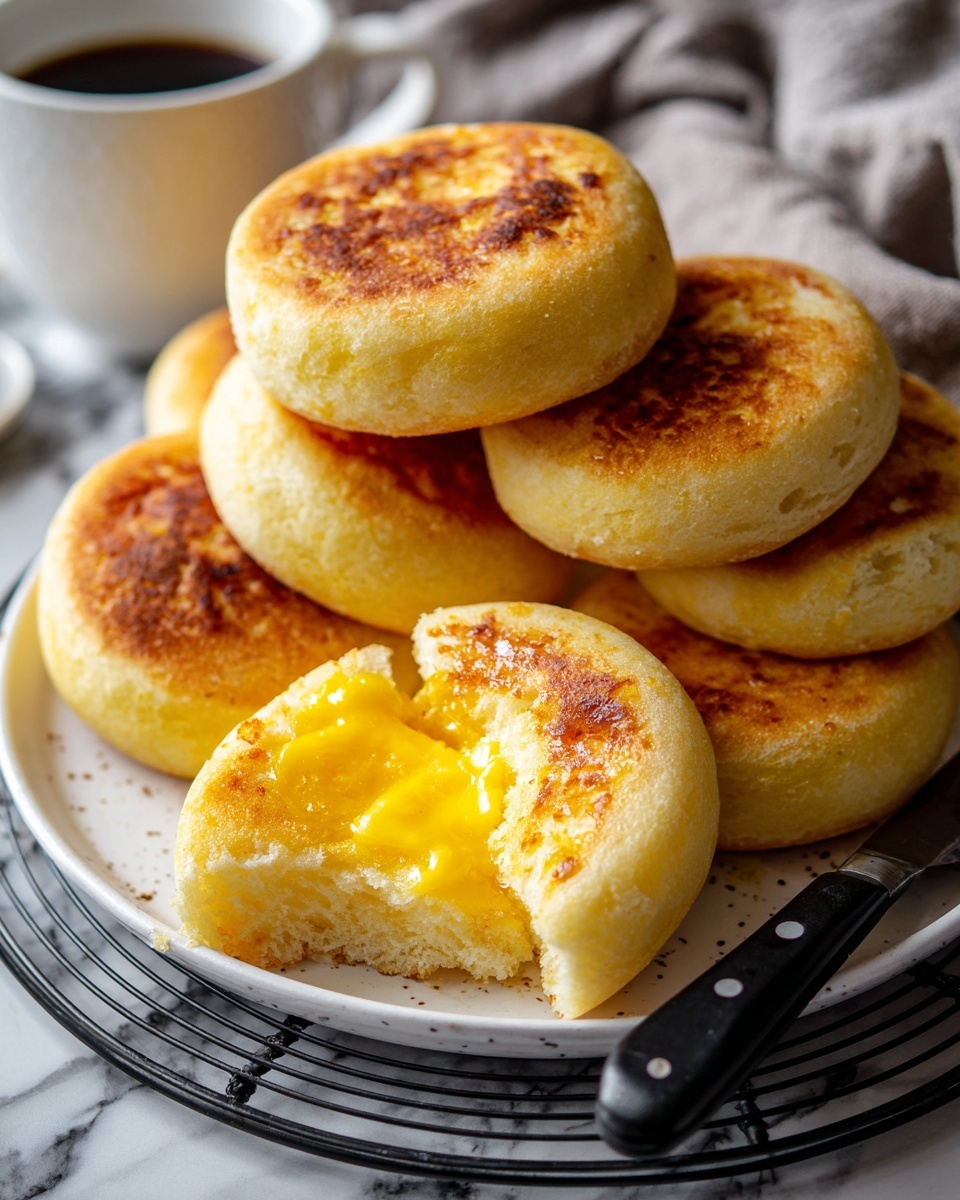
Garnishes
These muffins are a wonderful canvas for toppings. From a simple spread of butter or cream cheese to a dollop of your favorite fruit jam or honey, each bite becomes a comforting delight. Fresh herbs or a sprinkle of cinnamon sugar can add a fresh or sweet twist.
Side Dishes
Homemade English muffins pair beautifully with breakfast favorites. Think sunny-side-up eggs, crispy bacon, or a side of sautéed mushrooms. They’re also fantastic as a base for eggs Benedict or simply alongside a bowl of your morning fruit salad.
Creative Ways to Present
Don’t stop at the basics! Turn your muffins into mini sandwiches loaded with avocado, smoked salmon, or ham and cheese. Toast them and spread with peanut butter and banana for a quick snack. They even serve as a unique base for a savory bruschetta or a slider bun alternative.
Make Ahead and Storage
Storing Leftovers
If you have any leftover muffins, store them in an airtight container at room temperature for up to two days. The muffins hold their texture best when not refrigerated, but they will still be tasty if eaten within this short period.
Freezing
For longer storage, slice and freeze the muffins individually in a freezer bag. This way, you can toast them straight from the freezer without compromising their texture or flavor, making breakfast a breeze on busy mornings.
Reheating
The best way to reheat your frozen or day-old muffins is to pop them in the toaster or under the broiler for a few minutes. This refreshes their golden crust and warms the interior just right, ready for your favorite toppings.
FAQs
Can I use whole wheat flour instead of all-purpose flour?
Absolutely! You can substitute whole wheat flour for a heartier, nuttier flavor, though it might change the texture slightly making it denser. Consider using a mix of both for a lighter muffin with nutritional benefits.
Why do I need to fork-split the muffins?
Fork-splitting the muffins preserves the signature nooks and crannies on the inside, creating the perfect texture that holds butter and jam in all the little crevices. Simply slicing with a knife flattens this unique texture.
Can I make the dough the night before?
Yes! For even more flavor, try refrigerating the dough overnight after the first rise. This slow fermentation enhances the taste and allows for easier scheduling before cooking the muffins.
What if I don’t have cornmeal for dusting?
Cornmeal adds texture and prevents sticking, but if you don’t have it, you can substitute with semolina flour or simply use a lightly greased surface, though you might lose some of the classic texture and crunch.
Can I use instant yeast instead of active dry yeast?
Yes, instant yeast works well too. You can mix it directly with the dry ingredients without proofing in water first, which can save a bit of time.
Final Thoughts
There is nothing quite like biting into a warm, homemade English muffin with its perfect balance of crisp edges and soft, airy crumb. This Homemade English Muffins Recipe is a fantastic way to bring a little bakery magic into your kitchen. Whether you keep it simple with butter or get creative with layers of toppings, these muffins are destined to become a household favorite. So go ahead, roll up your sleeves, and enjoy making these delightful treats that your friends and family will ask for time and time again.
Print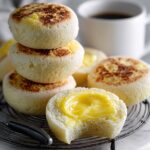
Homemade English Muffins Recipe
- Prep Time: 15 minutes
- Cook Time: 16 minutes
- Total Time: 1 hour 45 minutes
- Yield: 8-10 English muffins
- Category: Breakfast
- Method: Stovetop
- Cuisine: British
Description
Classic homemade English muffins with a soft, chewy texture and a golden crust, perfect for toasting and topping with butter, jam, or your favorite sandwich ingredients.
Ingredients
Dry Ingredients
- 3½ cups all-purpose flour
- 2¼ teaspoons active dry yeast
- 1 tablespoon sugar
- 1 teaspoon salt
- ½ teaspoon baking soda
Wet Ingredients
- 1 cup warm milk
- ½ cup warm water
- 2 tablespoons melted butter
- 1 large egg
- 1 teaspoon white vinegar
Other
- Cornmeal for dusting
Instructions
- Preheat Skillet: Warm your skillet or griddle over low heat while the dough proofs to ensure an even cooking surface.
- Activate Yeast and Mix Dough: In a bowl, combine the warm water, warm milk, sugar, and active dry yeast. Allow the mixture to sit until it becomes frothy, indicating the yeast is active. Then add melted butter, the egg, white vinegar, flour, salt, and baking soda, mixing until a sticky dough forms.
- Prepare Cooking Surface: Lightly oil your skillet or griddle and sprinkle a generous layer of cornmeal to prevent sticking and add texture.
- Proof Dough: Let the dough rise in a covered bowl for 1½ hours until it has noticeably doubled in size. Then divide the dough into 8 to 10 equal pieces. Shape each piece into a round disc shape and coat each with cornmeal to prevent sticking during cooking.
- Cook Muffins: Place the dough discs on the preheated skillet over low heat. Cover them and cook for 7 to 8 minutes on each side until the muffins are golden brown and cooked through.
- Cool and Split: Transfer the cooked English muffins to a wire rack to cool. Once cooled, use a fork to split them open, preserving their characteristic nooks and crannies.
- Serve: Toast the muffins and enjoy with butter, jam, or use as sandwich bases according to your preference.
Notes
- Using low heat is essential to ensure the muffins cook through without burning the exterior.
- Fork-splitting the muffins helps create the traditional texture and pockets for holding butter or spreads.
- Allow the dough to fully proof for the best rise and light texture.
- Cornmeal dusting prevents sticking and adds a pleasant crunch to the crust.

